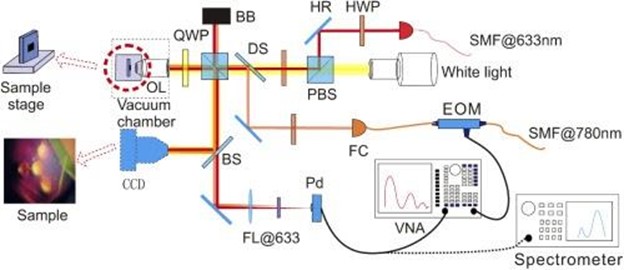
Graphene drum: Researchers develop new phonon laser design
Professor Konstantin Arutyunov of the HSE Tikhonov Moscow Institute of Electronics and Mathematics and a team of Chinese researchers developed a graphene-based mechanical resonator. With this resonator, the coherent emission of sound energy quanta, or phonons, has been induced. The phonon lasers, have potential in information processing and classical and quantum sensing of materials.
Phonons are artificially introduced objects in physics—quasi-particles, which correspond to vibrations of the crystal lattice of matter. Some substances, when irradiated, emit photons of the same wavelength, phase, and polarization. This process, stimulated emission, was predicted by Einstein over a century ago and is the basis of the laser.
A similar process, involving the emission of ‘identical’ phonons, underlies a device called a phonon laser, or saser. Magnesium ions, semiconductors, composite systems with microcavities, electromechanical resonators, nanoparticles, and other substances were used as active media for phonon lasers over the last decade. However, the current study used graphene to create coherent acoustic excitations and based on the unique properties of graphene, these resonators could have a wide use.
The graphene resonator was produced by microlithography deposited on a silicon substrate. Using ultraviolet light, a structure is ‘drawn’ on the substrate, allowing for the formation of a repeating system of micro-cavities by means of plasma treatment. The substrate is covered with graphene, and the system of ‘drums’ behaves like a resonator. When irradiated with laser light at a specific wavelength, photons are repeatedly reflected between the silicon backing and the graphene, forming optical cavities where mechanical vibrations of the appropriate frequency are produced. The study is published in the journal Optics Express.
Original Release: Eureka Alert
